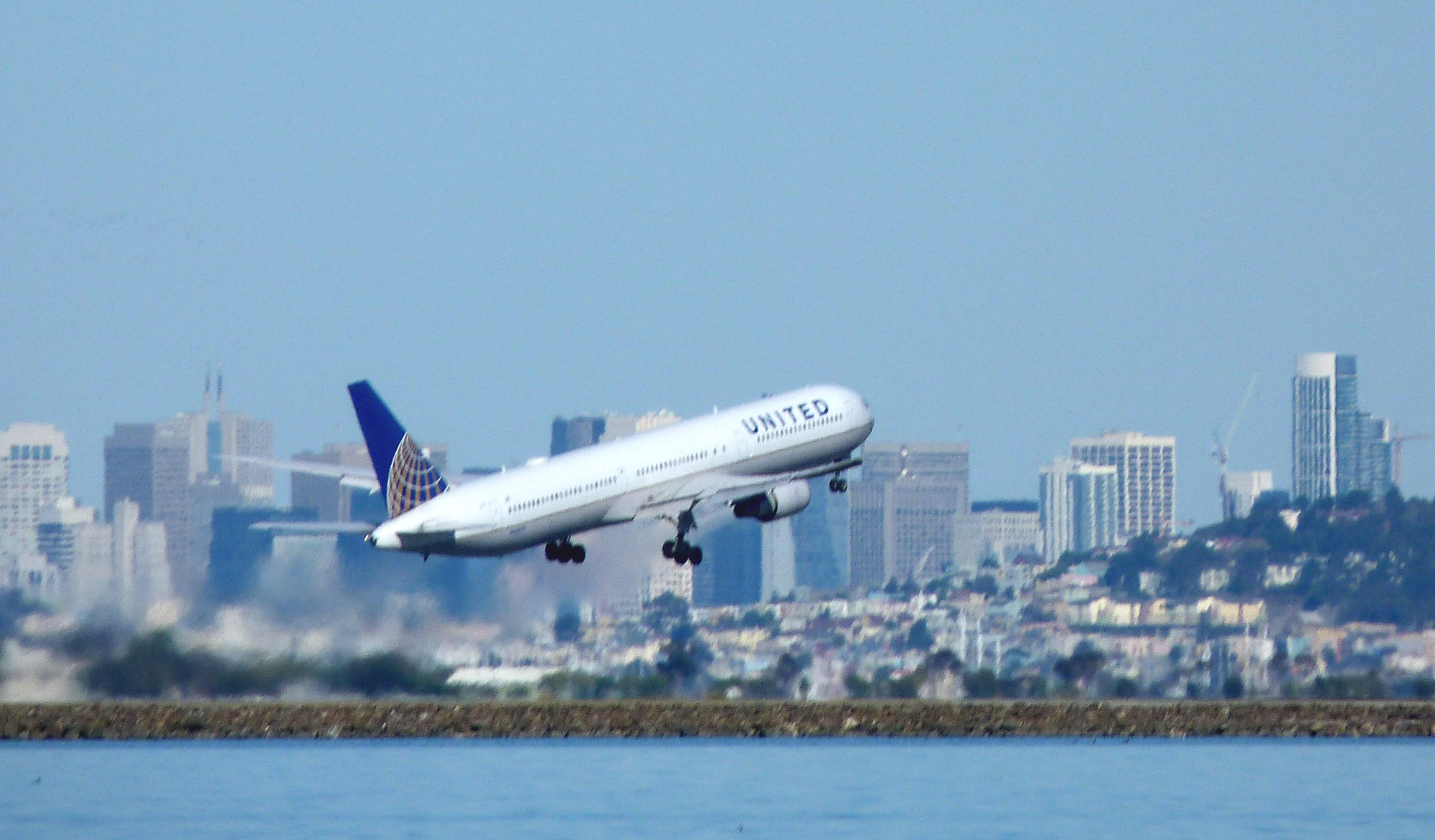Faced with a chorus of complaints from Palo Alto about airplane noise, San Francisco Airport is drafting new routes that would allow aircrafts to fly higher and veer closer to the Bay as they pass the city.
The airport is in the early stages of implementing its new Ground-Based Augmentation System (GBAS), navigation technology that relies on the airport's broadcast station to transmit GPS signals that are more precise than those coming from a satellite. The FAA approved GBAS last year and SFO is now in the process of designing new flight procedures that take advantage of its newfound precision.
According to the airport's website, GBAS uses its broadcasting capabilities to correct the "inherent errors" in satellite-based data that result from factors like changing atmospheric conditions and satellite positions.
"Uncorrected, GPS is accurate to about 40 meters. With GBAS, the accuracy improves to within 2-3 centimeters," the website states.
Now residents and airport officials hope the new system will help them address a topic of common frustration: airplane noise. For years, Palo Alto residents have complained about the airplane superhighways that formed over their homes after the Federal Aviation Administration consolidated flight paths as part of its NextGen initiative in 2014. Now, SFO administrators hope the new system will clear the way for new flight procedures -- ones that increase the distance between residential neighborhoods and airplane paths.
"Our goal with the innovative procedures is to increase altitude, drop the speed restrictions and … allow the aircraft to accelerate over the Bay where, if it needs to deploy a deceleration device, it will deploy it over the water and not over the residential areas," Paul Hannah, a consultant with SFO who is helping to implement GBAS, said at the Monday meeting.
Specifically, SFO is considering a new flight procedure in which planes traveling north from EDDYY waypoint, which is over Los Altos Hills, remain higher as they pass the SIDBY waypoint and other Midpeninsula communities and veer further into the Bay than they do today as they approach the airport. With the GBAS system, planes would be able to fly at an altitude of 5,400 or 5,500 feet, well above the current altitude of 4,000 in the SIDBY area under the current procedures.
While the change could help, Hannah cautioned that the scope of the current exercise is limited. His team is only evaluating approach procedures at the moment and not arrivals and departures. Some of the ideas that residents from Palo Alto and other communities have been proposing in recent meetings could still be explored, he said, but it won't be until the later phases of FAA approval.
For some Palo Alto residents, the latest efforts by SFO to address the noise issue continue to fall short. While airport officials had pledged to carefully gauge noise and compare measurements from the current system to measurements from GBAS, local advocates pushed for more precise data. Local plane advocates urged the airport to provide measurements for specific flights rather than aggregate data that averages out the impact of many GBAS and non-GBAS flights. SFO officials countered that releasing measurements for specific plans could lead to an imprecise picture because of fluctuations in weather and other factors that may skew the results.
"I hear all this scientific data but I don't see any relief in sight," Palo Alto resident Tom Shannon, who lives under SIDBY, told airport officials.
Shannon said that on Saturday and Sunday afternoons he typically sees seven to 12 flights per hour go over his yard, most of which are at altitude below 4,000 feet. The frequency dips and then increases again between 10 p.m. and 1 a.m. The cargo planes follow at 4 a.m., he said at the hearing.
"We have windows open in summer time with weather like today and it wakes you up," Shannon said.
Why, he asked, can't the area have three SIDBY-like corridors so that the planes don't continuously hit the same vector?
Jennifer Landesman, a longtime plane noise activist, criticized SFO for its "piecemeal" approach at solving the airplane noise issue and urged staff to measure the cumulative impacts of its policy changes.
"I appreciate everybody's effort, but the only way we'll be able to really help anyone is by actually getting to something that appears to be fair," Landesman said. "Right now, I'm just not feeling that yet."



Comments